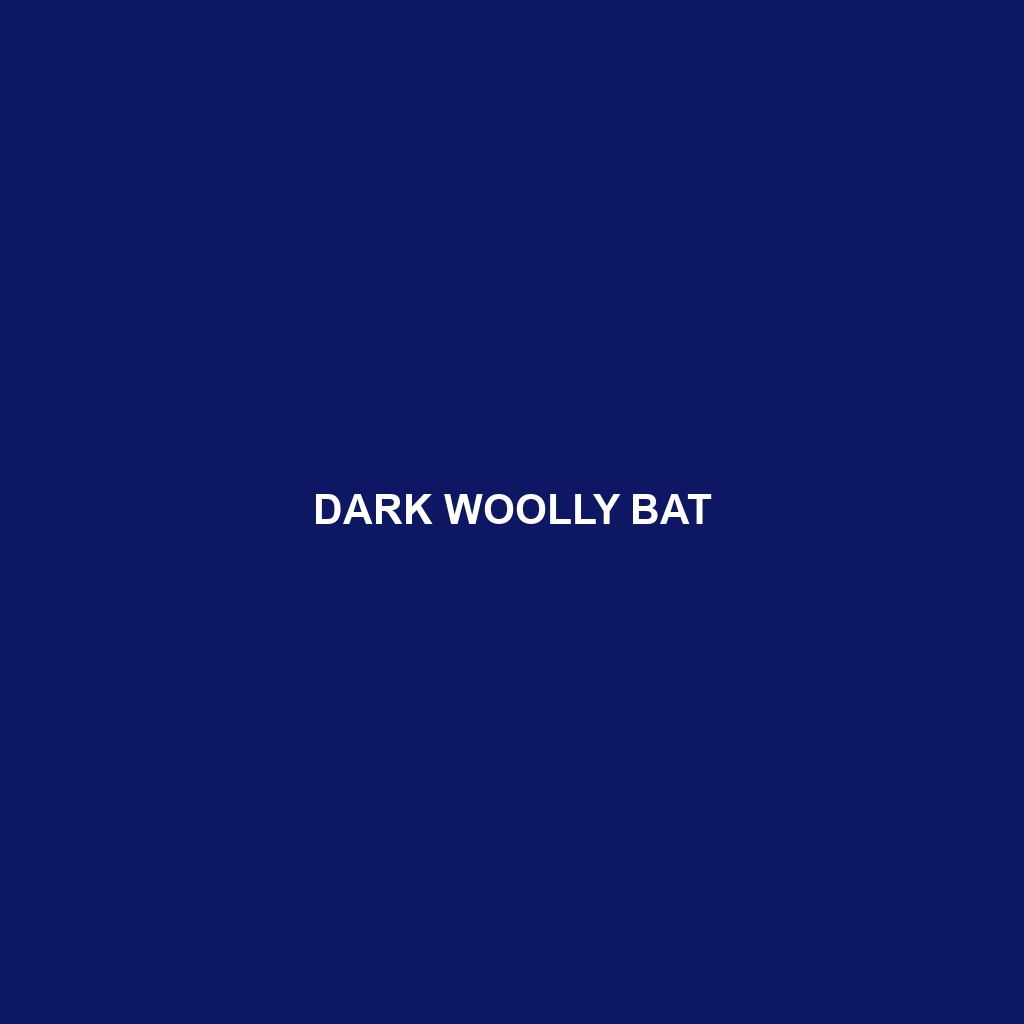Dark Woolly Bat
Common Name: Dark Woolly Bat
Scientific Name:
Habitat: The Dark Woolly Bat primarily inhabits regions in tropical and subtropical environments. This species is commonly found in rainforest regions of Central and South America, particularly in areas where dense canopy cover exists. They often roost in hollow trees or under leaves, adapting well to moist and humid conditions which are critical for their survival.
Physical Characteristics: The Dark Woolly Bat is characterized by its distinctively dark fur, which ranges from deep brown to black. These bats typically measure around 10 to 12 centimeters in body length with a wingspan of about 25 to 30 centimeters. Their rounded ears, short snouts, and broad wings are distinctive features that allow them to navigate effectively through their forest habitats. The fur is dense and soft, giving them their ‘woolly’ appearance, which aids in insulation.
Behavior: Dark Woolly Bats exhibit nocturnal behavior, actively foraging during the night. They are known for their agile flight, often maneuvering through dense foliage in search of food. These bats utilize echolocation to navigate and hunt, emitting high-frequency sounds that help them detect prey and obstacles. Socially, they tend to roost in small colonies, making them more vulnerable to predators while offering them community support for warmth and safety.
Diet: The diet of the Dark Woolly Bat mainly consists of insects, including beetles, moths, and flies. Their feeding habits revolve around hunting in flight, where they catch insects mid-air using their agile movements. During foraging, they may also consume nectar from flowers, playing a role in pollination within their ecosystem. This opportunistic feeding strategy showcases their versatility in diet.
Reproduction: Dark Woolly Bats typically breed once a year, with mating occurring in late summer or early fall. Females give birth to one pup at a time, which they nurture in a safe roosting spot until it is capable of flight. The gestation period lasts approximately 60 days. Pups are born relatively underdeveloped and rely heavily on their mothers for the first few weeks of life.
Conservation Status: Currently, the Dark Woolly Bat is classified as ‘vulnerable’ due to habitat loss and degradation caused by deforestation and climate change. Conservation efforts are critical to preserve their habitats and ensure their survival, highlighting the need for awareness about their ecological importance.
Interesting Facts: A fascinating aspect of the Dark Woolly Bat is its ability to adapt its diet and roosting habits based on environmental changes. Additionally, these bats have been observed to engage in social grooming behavior, which strengthens the bonds within their colonies and helps maintain hygiene.
Role in Ecosystem: The Dark Woolly Bat plays a crucial role in its ecosystem as both a predator and pollinator. By controlling insect populations, they help maintain ecological balance. Their feeding on nectar supports plant reproduction, highlighting their importance in fostering biodiversity within their habitats.
